Marin's Rift Zone has undergone many iterations in its lifetime but has always been a trail bike with a strong cross-country bias, especially in the early 2010s.
With the trend for slacker, longer, lower and more downhill-orientated geometry, with bikes such as Devinci’s Django and the Nukeproof Reactor basking in the limelight of this emerging sector of short travel bikes with serious attitude, it comes as no surprise that Marin has updated the most recent Rift Zone model — which I reviewed here — to keep up with this ever-progressing trend.
- Orange Stage 6 RS long-term review
- Best trail mountain bikes
- Best mountain bike pedals — 16 of our favourites tried and tested
Like everything in life, there are compromises to be made, so in deploying more extreme geometry has the new Rift Zone moved too far away from its all-day trail riding capabilities? Or has the iconic Californian brand managed to hit the sweet spot of capability and pedal-ability with great geometry and 29in wheels?
I took to some of the wettest and grottiest trails to find out.
Marin Rift Zone Carbon 2 frame details
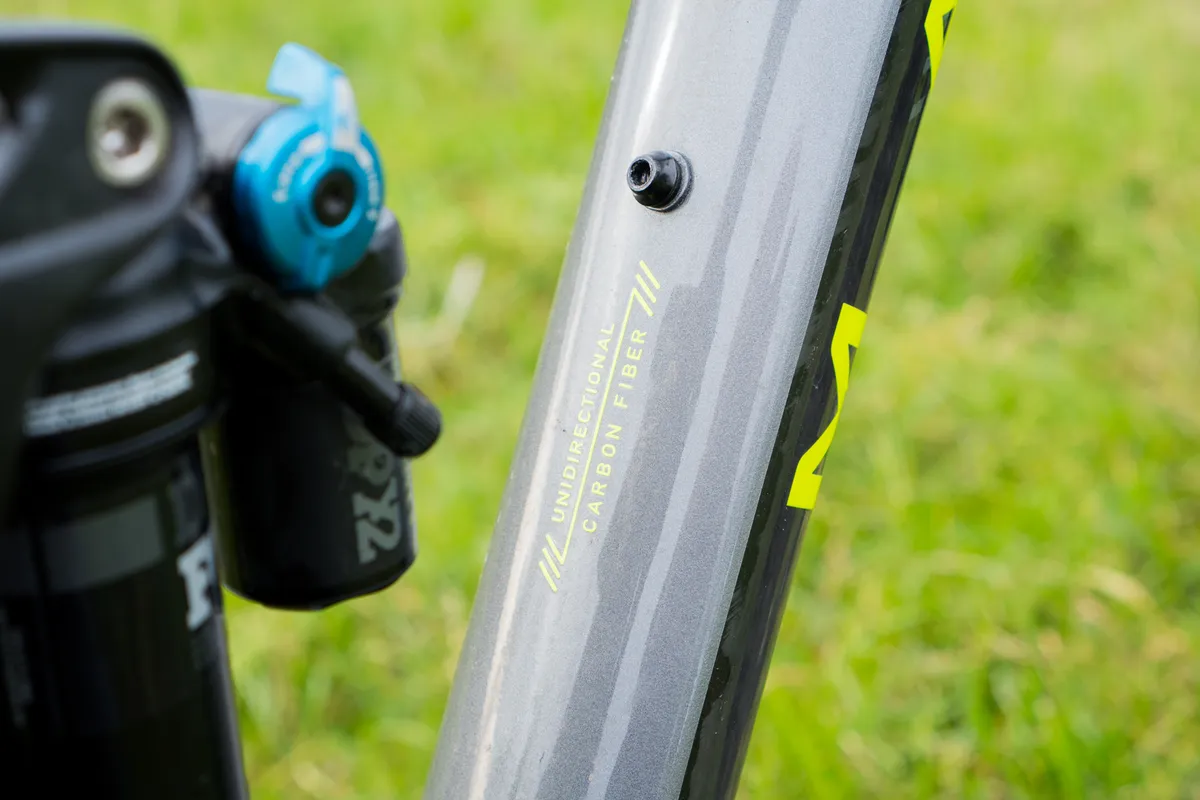
Using a monocoque unidirectional carbon fibre construction at the front-end of the bike, the carbon Rift Zone 2 is the jewel in the crown of Marin's two-bike carbon and three-bike alloy range.
Except for the main frame’s material, it shares many of the features seen on the more affordable aluminium models.
The front triangle has internally routed cables for the brakes, gears and dropper post, which all enter the frame at the head tube. The brake cable exits on the top of the non-driveside down tube and the gear cable exits just in front of the bottom bracket on the underside of the down tube.
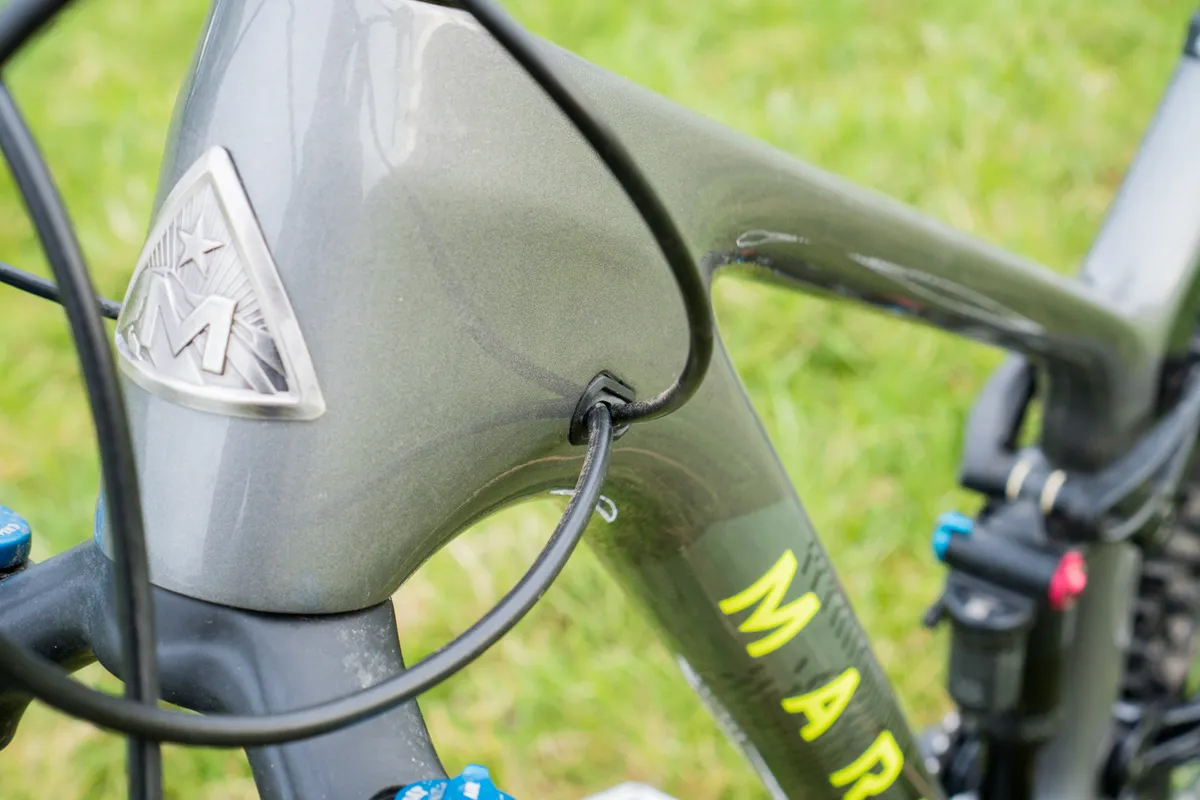
The rear end is made from Marin’s Series 3 6061 alloy, sharing the chain and seatstays with the Alpine Trail model. Both the brake and gear cables are routed internally through the bike’s chainstays.
The rear axle has BOOST 148 x 12 spacing and there’s a 73mm threaded bottom bracket. You also get ISCG05 chain device tabs, a tapered head tube and bottle cage bosses on the top side of the down tube, with enough space to fit a standard bottle inside the front triangle.
Marin Rift Zone Carbon 2 geometry
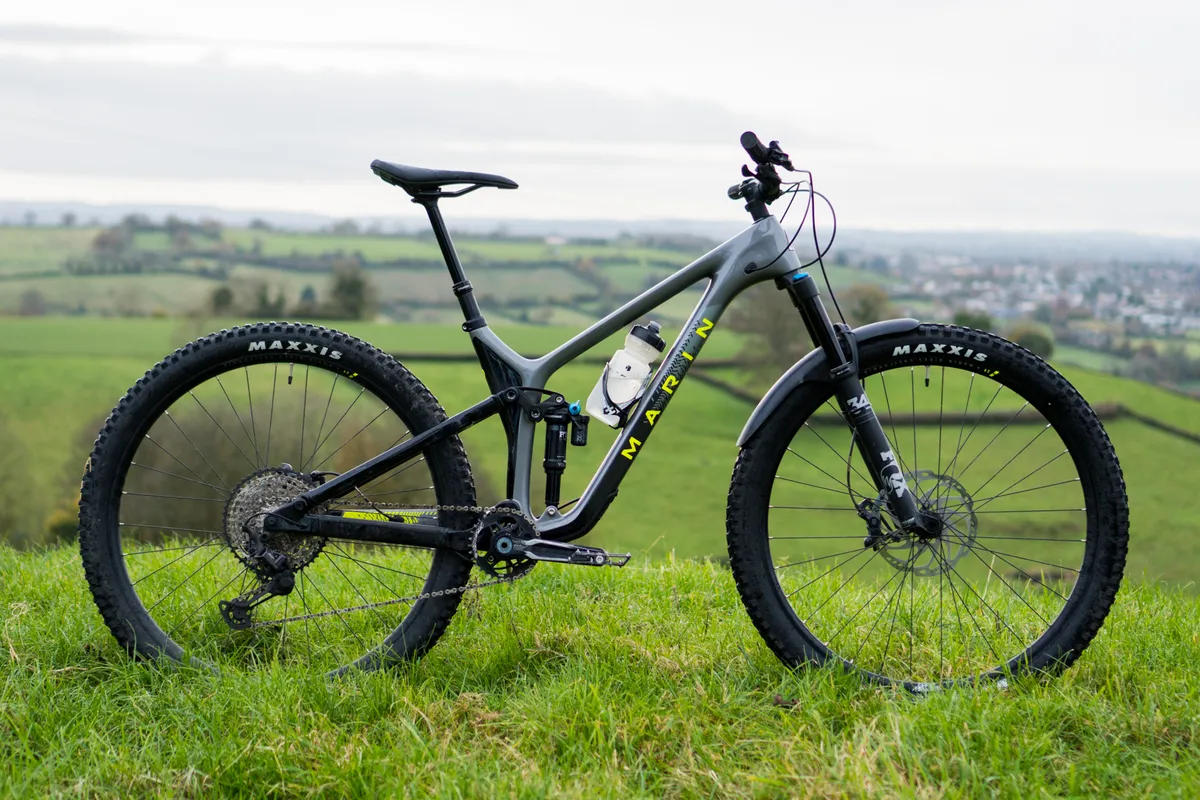
The Rift Zone’s headline geometry figures are on the extreme side for a trail bike. The size large I tested has a spacious 480mm reach and a fairly long 1,231mm wheelbase, which is coupled with a positively short 425mm chainstay. This means the bike’s front centre — as a ratio of its overall length — is much longer than normal at 806mm.
You also get an impressively slack 65.5-degree head angle, a steeper-than-average 76-degree seat tube angle and a 344mm bottom bracket height.
These numbers would be as happy on an enduro bike as they are making up the geometry of a trail bike, and are figures that some riders have been crying out for in recent times. In theory, they should combine to create a bike that’s as comfortable descending as it is climbing, rather than trying to prioritise one aspect over another.
Geometry figures quoted are for a size large:
- Seat tube length: 425mm
- Seat angle: 76 degrees
- Head angle: 65.5 degrees
- Top tube (effective): 632.51mm
- Reach: 480mm
- Chainstay: 425mm
- Wheelbase: 1,231mm
- Bottom bracket height: 344mm
- Standover: 694.16mm
- Stack: 611.7mm
- Head tube length: 110mm
- Sizes: S, M, L*, XL
- Weight: 14.33kg / 31.59lb (size large, without pedals)
Marin Rift Zone Carbon 2 suspension
The Rift Zone uses Marin’s MultiTrack suspension technology, which is based around a single pivot, linkage-activated system that is claimed to offer an impressive balance of pedalling efficiency and big bump-absorbing capabilities thanks to a progressive leverage ratio and great small bump sensitivity at the start of its travel. The system has 125mm of travel.
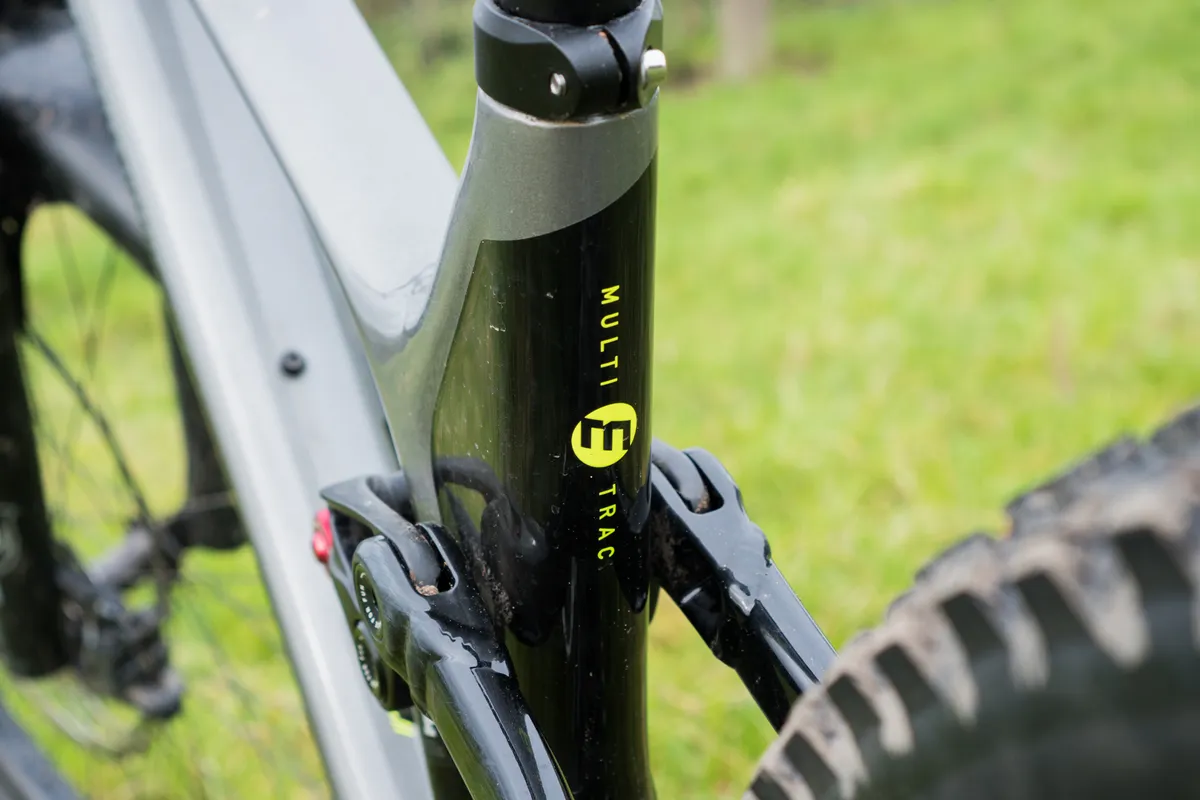
The Rift Zone 2 is specced with a Fox DPX2 Performance rear shock, and is the only bike in the Rift Zone range to feature a piggyback rear damper. The DPX2 has low-speed rebound adjustment and a compression adjuster that doubles up as a lockout.
Up front, the Rift Zone 2 has a Fox 34 Performance fork fitted with the GRIP damper and 130mm of travel. The well-known GRIP damper has low-speed rebound and low-speed compression adjustment, which also locks the forks out when fully closed.
Marin Rift Zone Carbon 2 specifications
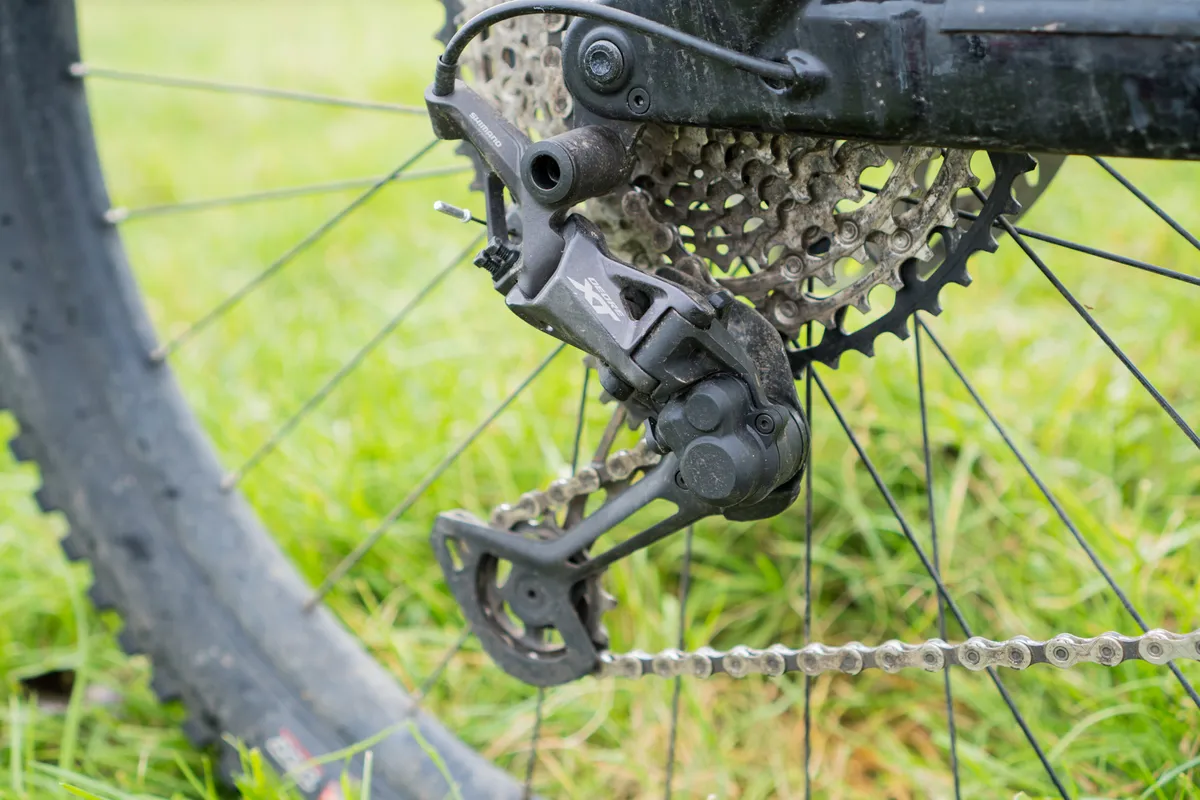
The Rift Zone 2 shouldn’t need upgrading out of the box.
A Shimano SLX/XT mix makes up the bike’s 12-speed drivetrain and you get the fantastic XT mech that’s paired to an SLX shifter.
There’s an SLX 10-51 tooth cassette that uses Shimano’s Micro Spline freehub body, and the 32-tooth narrow wide chainring is paired with FSA Gradient cranks.
The bike’s own-brand Marin rims, with a 29mm internal width, are laced to Shimano hubs with that Micro Spline freehub and centrelock disc mounts.
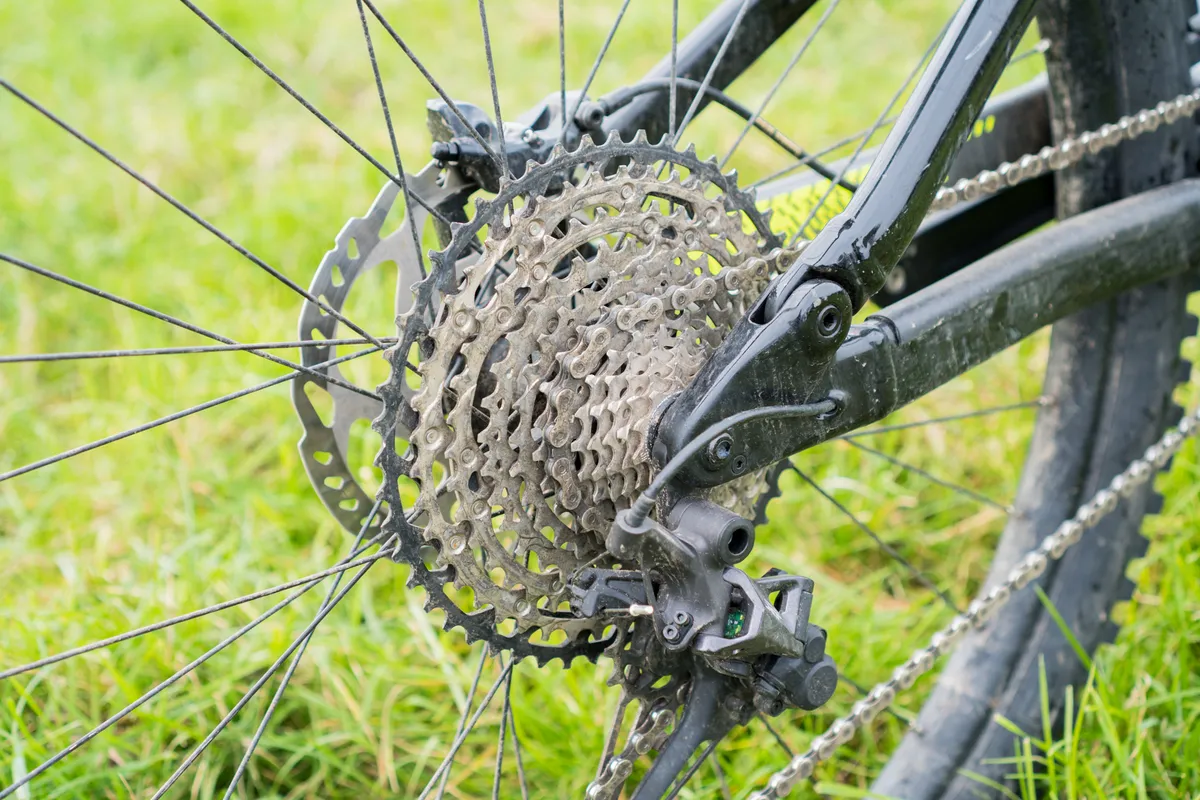
The bike’s clad in a Maxxis Minion DHF 2.5 x 29in WT 3C MaxxTerra EXO Plus protection tyre on the front and a Maxxis Minion DHRII 2.4 x 29in WT 3C MaxxTerra EXO Plus protection tyre out back.
Stopping is taken care of by Shimano’s SLX four-piston brakes with a 180mm rotor on the rear and a 200mm rotor for the front brake.
There’s an X-Fusion Manic 150mm travel dropper post that’s mated to a PNW Loam lever, which is compatible with Shimano’s lever clamping integration.
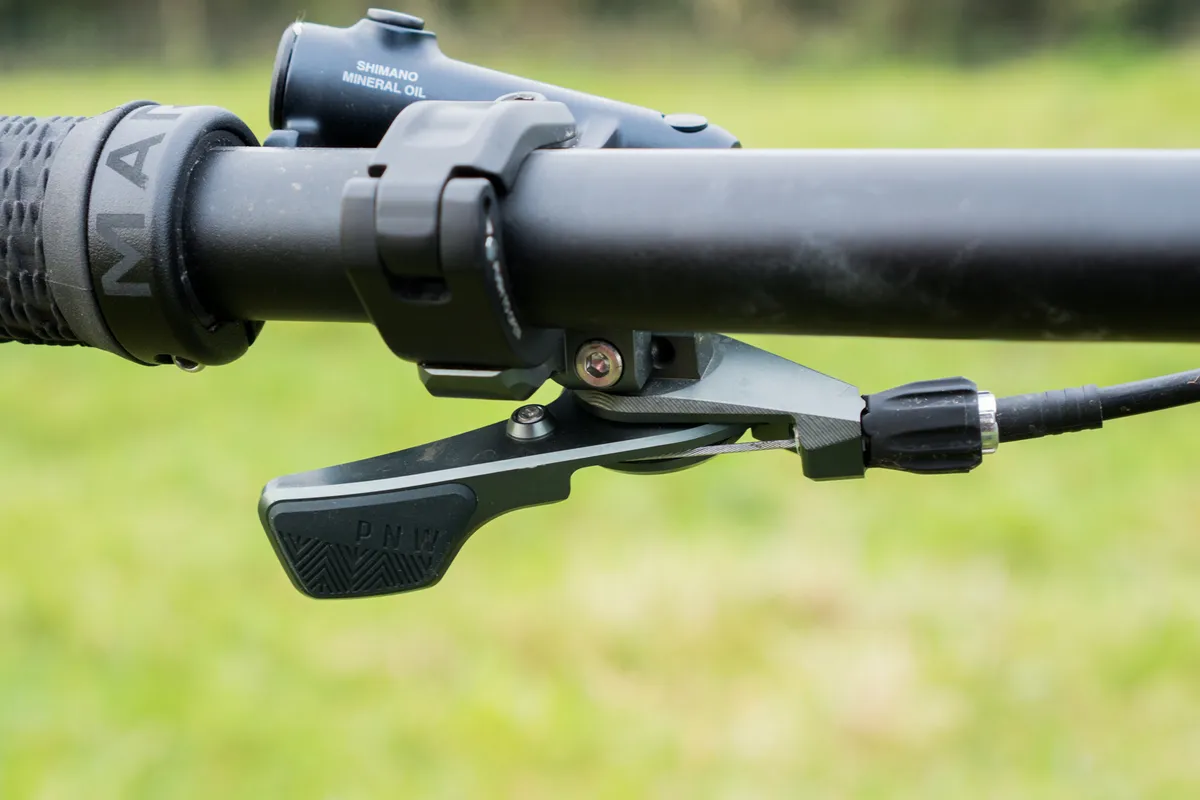
This is specced with Deity’s 31.8mm clamp, 787mm wide, 25mm rise Skyline bar and a short 35mm own-branded Marin stem.
The bike’s topped off with own-brand Marin lock-on grips and a Marin saddle.
Marin Rift Zone Carbon 2 set up
Like most bikes with sorted geometry, it’s not an especially arduous affair to get the Rift Zone set up.
Marin had kindly set the tyres up tubeless, so all I needed to do was pump them up to my preferred pressures.
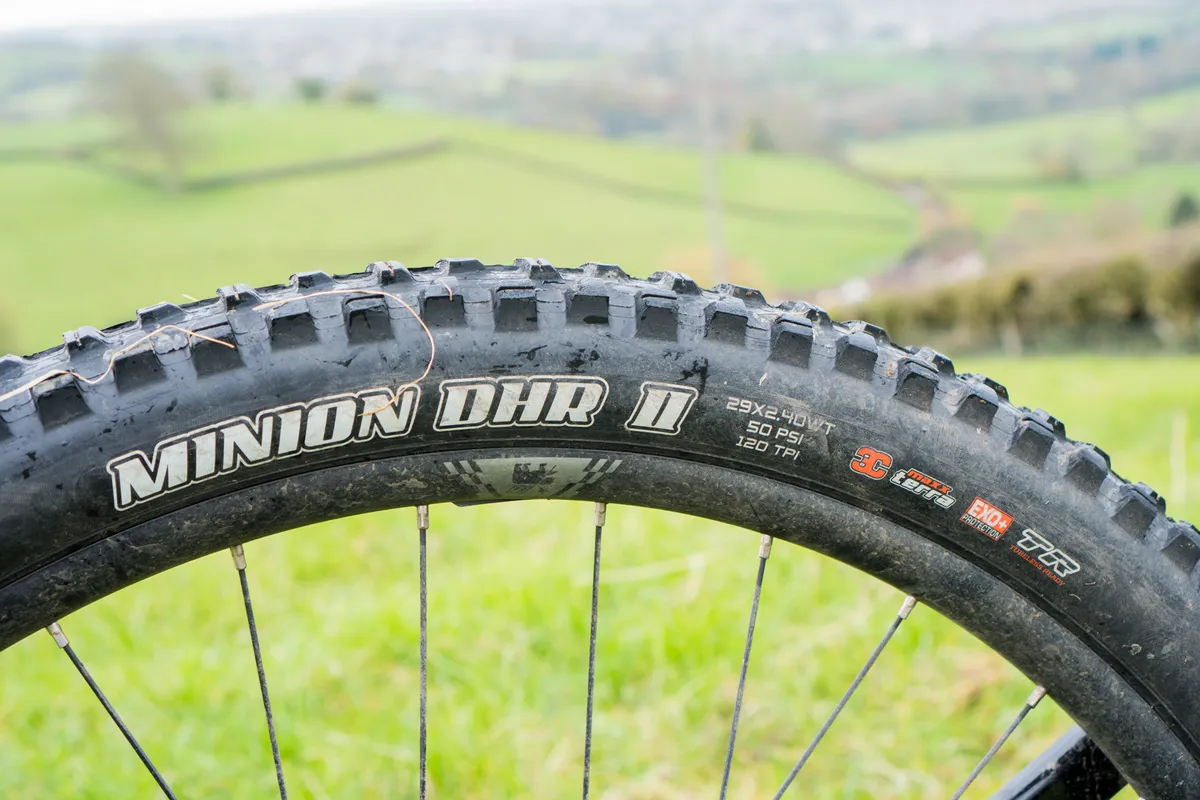
Likewise, brake lever reach has tool-less adjustment on the SLX levers, and bar roll and stem height were simple to dial in thanks to a generously lengthy steerer tube.
Like almost every bike I tend to ride, I set the saddle forwards and nose down in its rails despite the relatively steep seat tube angle.
From the factory, the fork’s were delivered with three 10cc tokens, which meant I had to start out with 115psi in the forks to stop them bottoming-out on harsh hits. After adding three more tokens, taking the number installed to the maximum six, I managed to drop air spring pressure to 85psi. This provided the perfect compromise between comfort and bottom-out resistance.
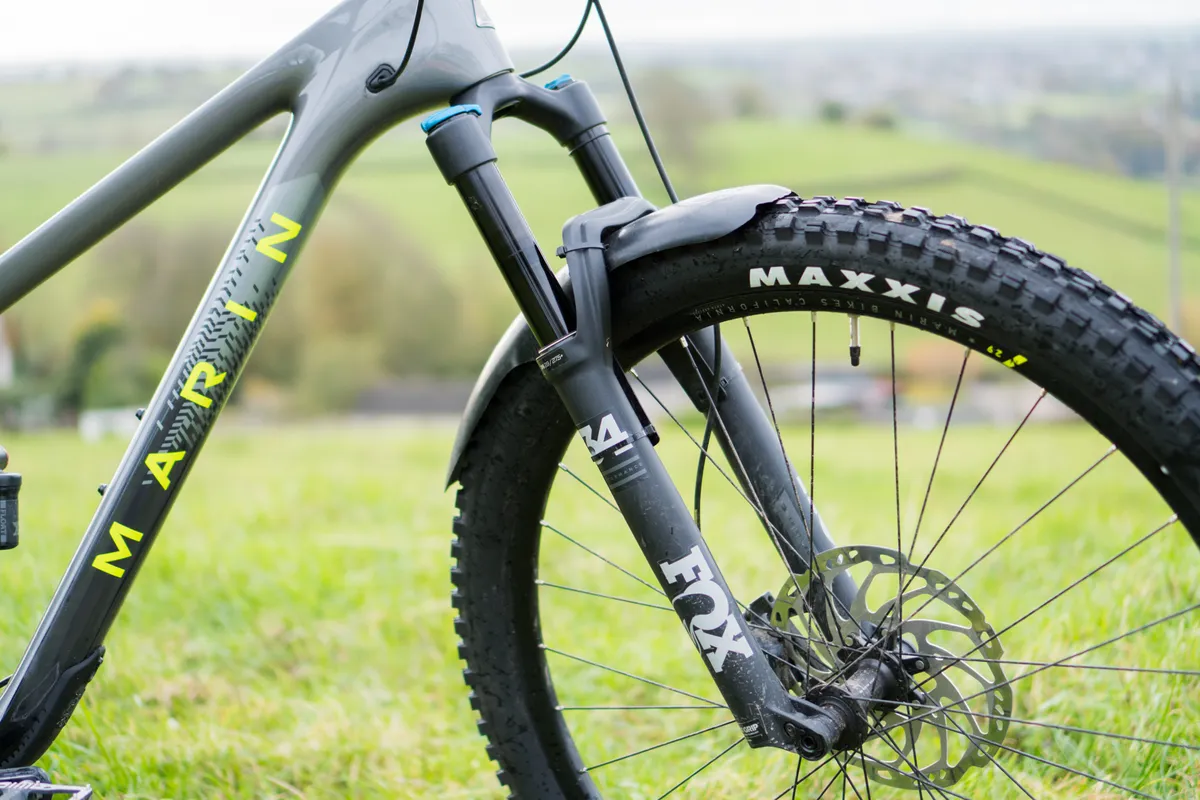
Out back, the Fox DPX2 was installed with the smallest 0.2in cubed spacer from the factory. I started with 220psi in the air spring just to reduce harsh bottoming-out.
Once I’d changed the spacer for the biggest 1.02in cubed version and decreased the shock’s pressure to 190psi, the bike performed much better, only bottoming-out on hits where you’d expect any bike to do the same.
These were the settings I felt most comfortable with and, once dialled in, I didn’t need to alter them further.
It’s certainly worth noting that I like my bikes to be set up quite hard and my settings are generally at the more extreme end of the set-up scale. For people with less extreme tastes or needs, the stock volume spacers should be fine.
Marin Rift Zone Carbon 2 ride impressions
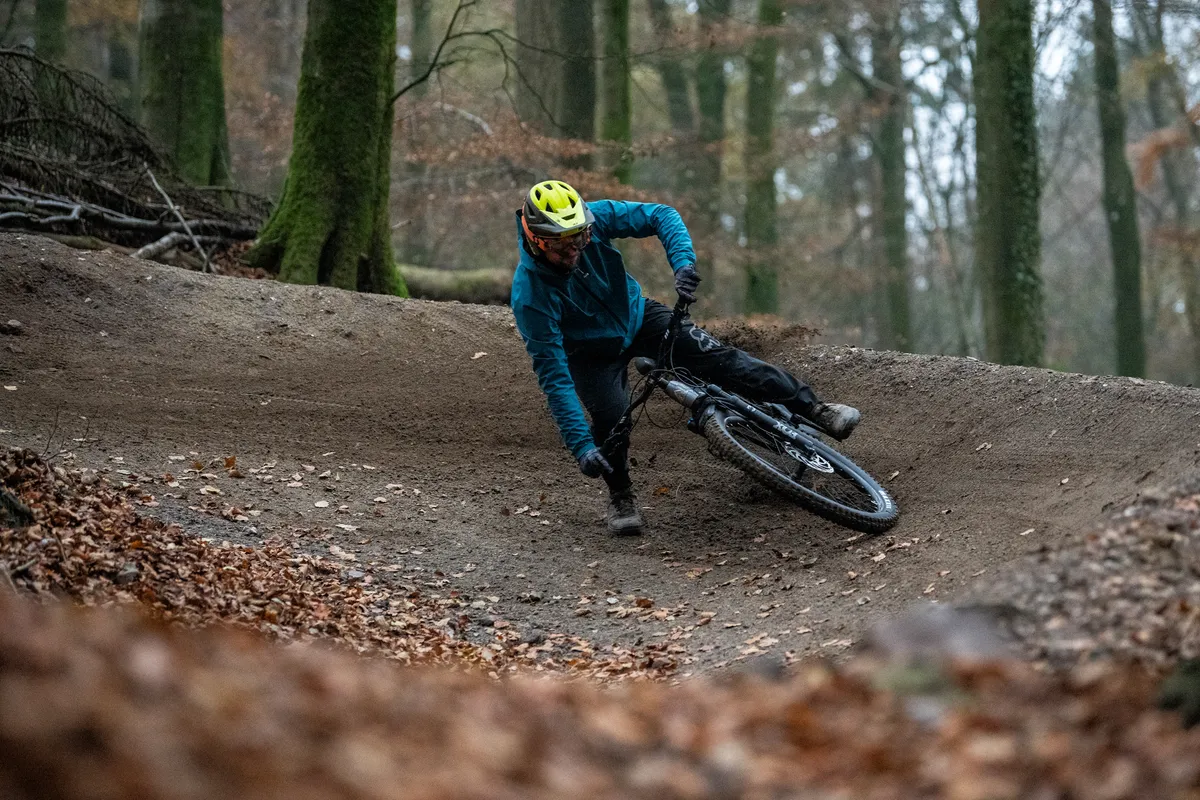
Swing a leg over the Rift Zone 2 and its intentions become apparent almost instantly. The fork looks raked out, there’s plenty of cockpit room and there’s a nice front-to-back balance that only some bikes have without extensive fiddling and tuning.
Marin Rift Zone Carbon 2 climbing performance
Set off on a climb and that slack head angle doesn’t impede swift progress. In fact, the bike happily accelerates fast when provoked, with very little of your driving motion lost to pedal bob when seated, especially at lower cadences on rougher terrain.
Switch to pedalling out of the saddle at a low cadence and the back-end does absorb some of your legs' power. Likewise, if you’re spinning your legs on flat fireroads, the rear-end undulates with every pedal stroke. However, this movement isn’t especially pronounced and I’m yet to find an XC-focussed bike that doesn’t do this.
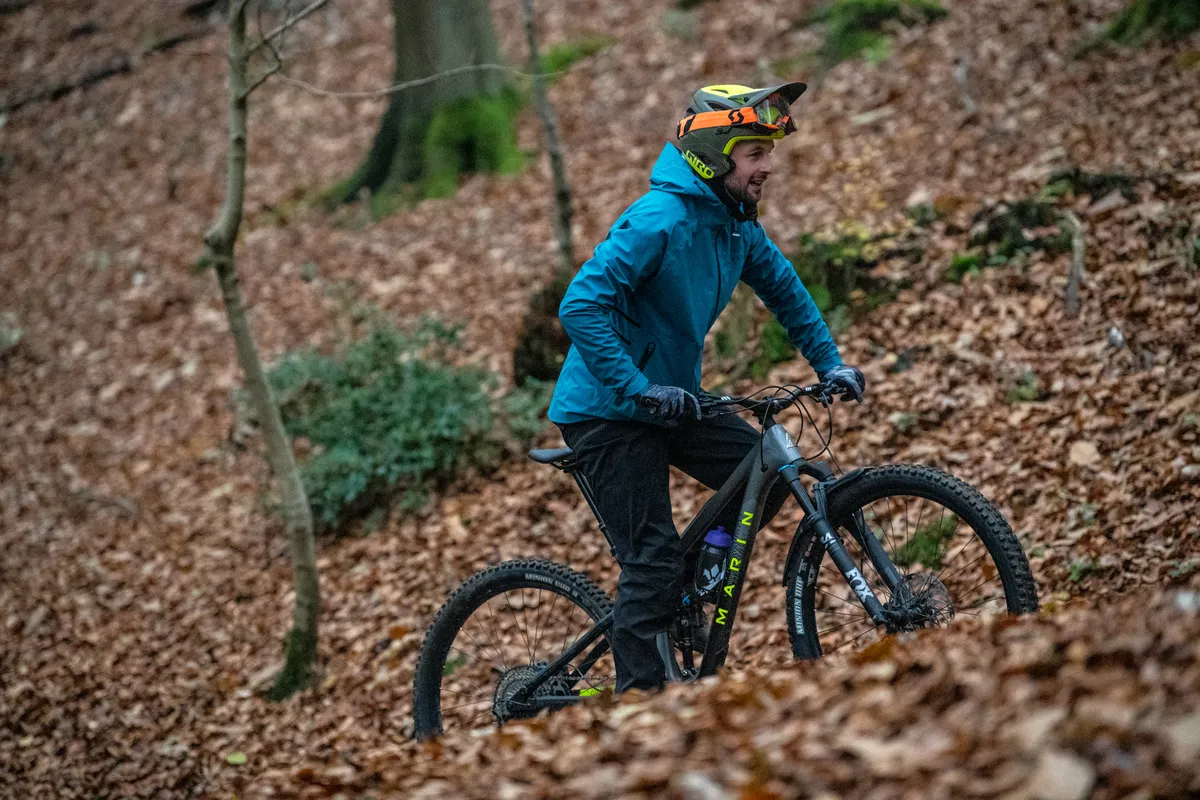
You can always use the lockout lever, which shuts down the shock’s damping, to stop both forms of bob entirely, but that will sacrifice seated comfort and standing traction if it’s particularly rough.
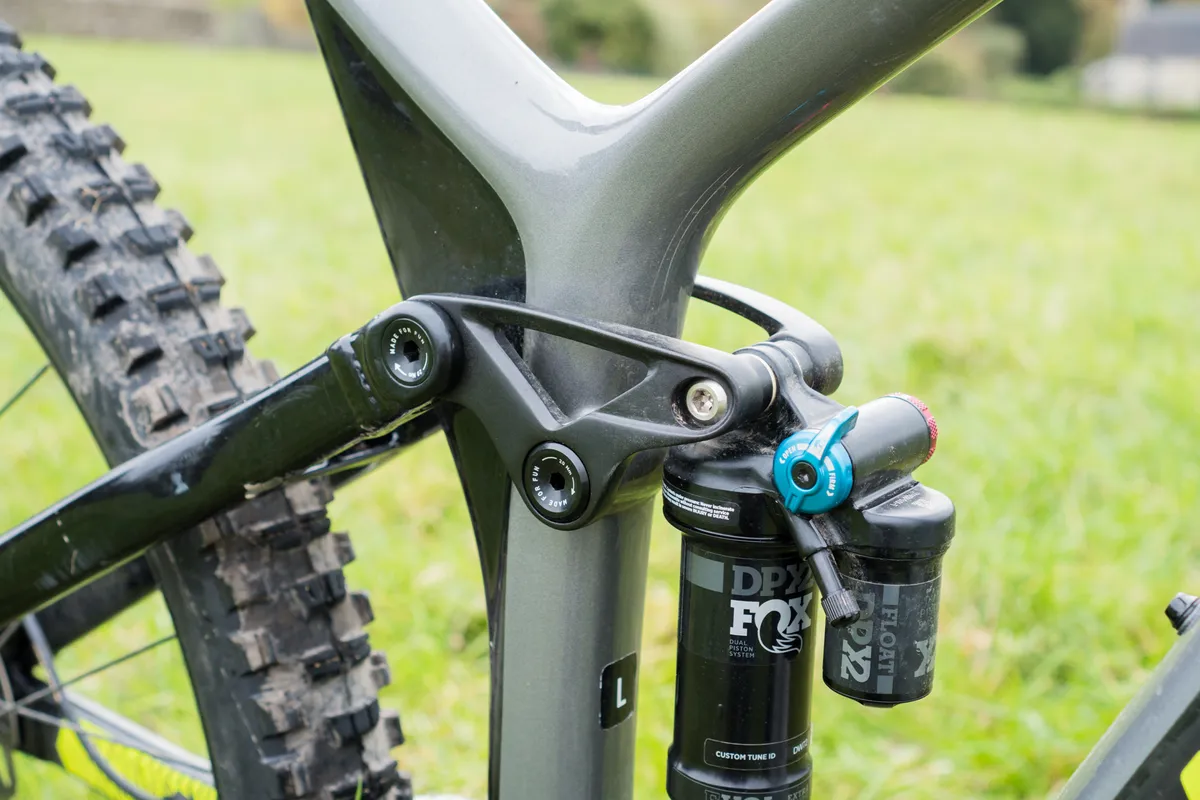
The amount of comfort on offer is fantastic, especially with a full complement of volume reduction spacers fitted to the rear shock. It’s supple enough to remove the majority of small, square-edge bumps that, if the bike wasn’t working so well, can be uncomfortable.
With this compliance and the ramp up from the rear end, the bike’s always ready to tackle medium and bigger hits on climbs, such as larger roots, rocks and holes. Riding seated over this sort of bump doesn’t cause it to rock rearward in its travel and it remains stable, making it easier to control.
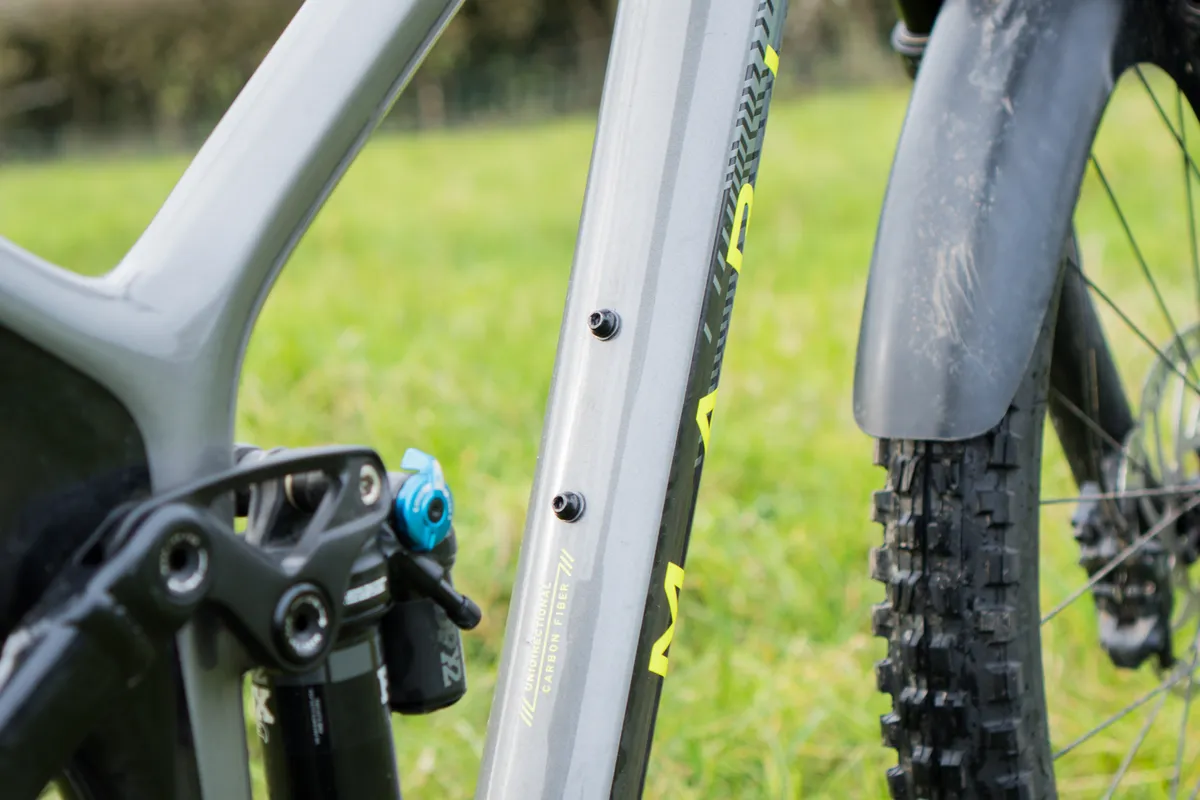
This resistance to blow through its travel also helps to reduce pedal strikes and maintains a steep-as-possible seat-tube angle compared to bikes that are less supportive. And, because the ramp-up feels quite gradual, you aren’t suddenly hitting a brick wall of resistance that feels impossible to overcome.
The level of support the rear-end provides helps you to generate speed from pumping terrain, which makes the bike feel lively when you’re fully engaged with the trail. There are truly enjoyable feelings of easily-generated speed if you’re willing to work with the bike and to pump the ground.
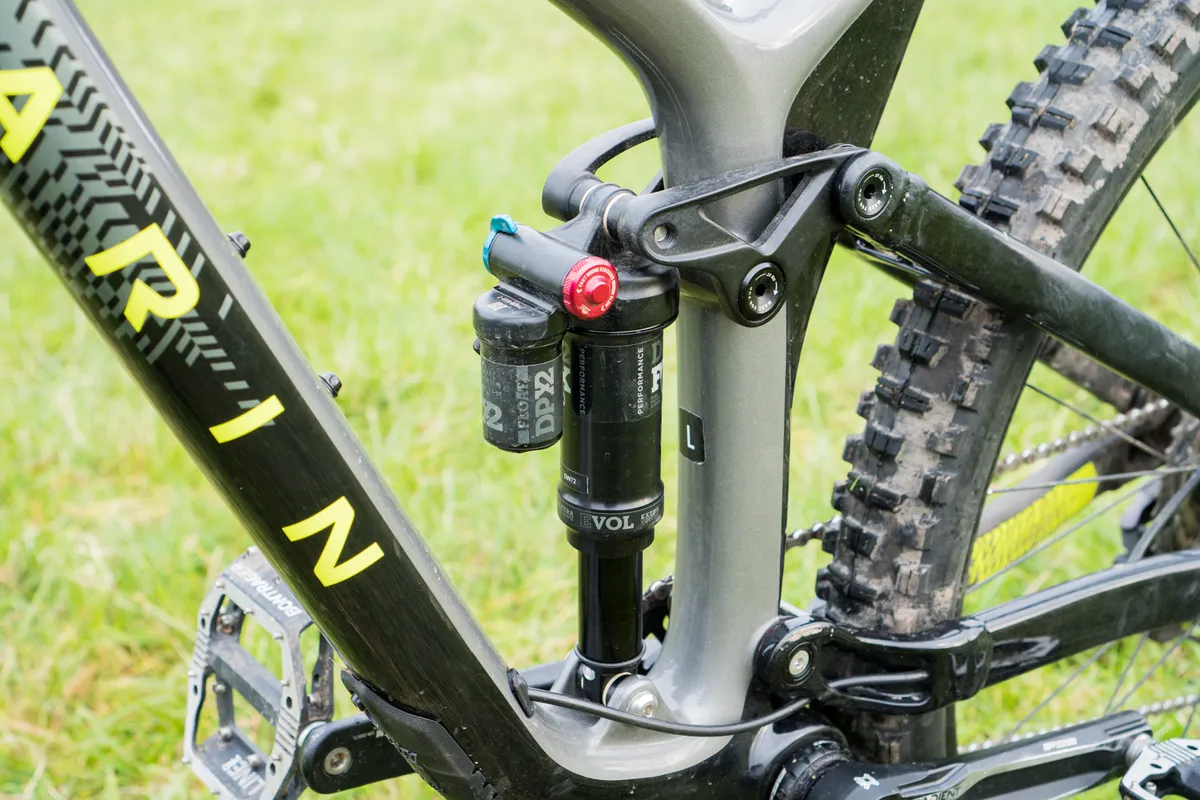
There is, however, a small amount of pedal kickback when you’re in one of the largest cogs and hit a fairly large bump — like a depression in the trail or a large root or rock. It’s possible to feel the chain tighten as the suspension compresses, tugging on the pedals.
While I didn’t find this to be especially problematic, and it only really presents itself in the easiest gears, if you're sensitive to pedal kickback you might be less enamoured by the sensation.
And let’s not forget the bike’s geometry. The reach number gives you plenty of room to move about on the bike when you’re climbing and, when combined with the short stem, I didn’t feel like I was being stretched out.
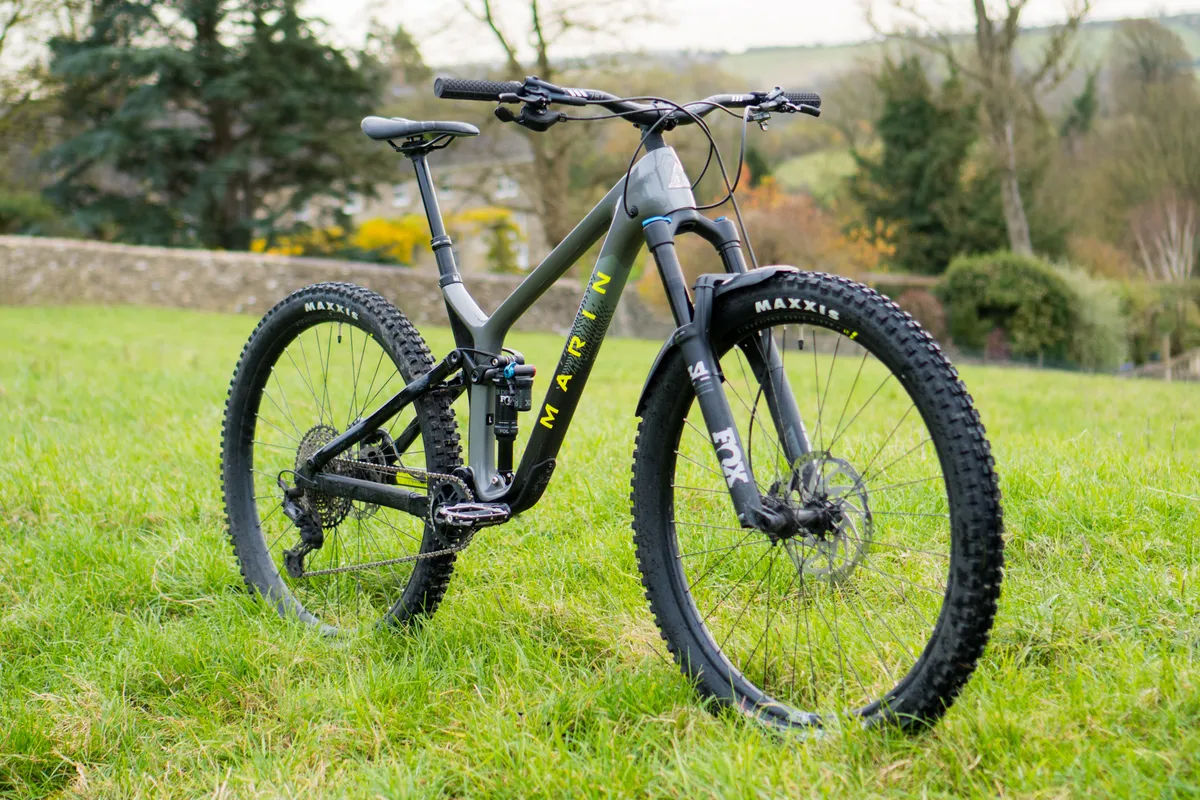
In fact, the seated pedalling position is fairly upright, which is almost certainly a combination of the short stem and fairly steep seat tube angle.
The 76-degree seat angle is a welcome addition to the bike’s geometry too, but I can’t help but feel that it could be steeper still because, as I explained in the bike set up section, I still angled my seat’s nose down and pushed it as far forward in the camp as I possibly could.
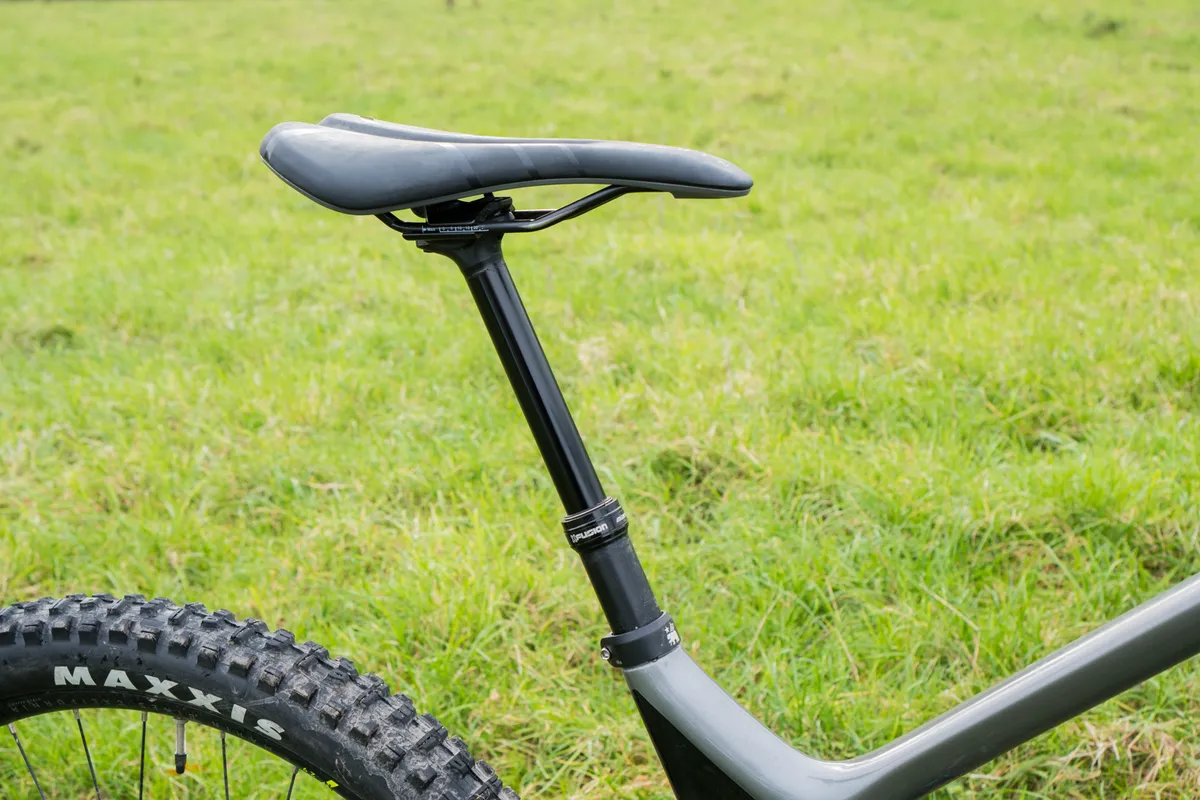
The height of the bike’s seat tower is much lower than the frame’s silhouette would suggest and required an incremental rising of the seatpost until I found the sweet spot.
As someone with relatively short legs and a long back, this took me by surprise, but it’s one I’m grateful for and means that shorter people will be able to fit on longer bikes or taller people can run even longer travel dropper posts.
Marin Rift Zone Carbon 2 descending performance
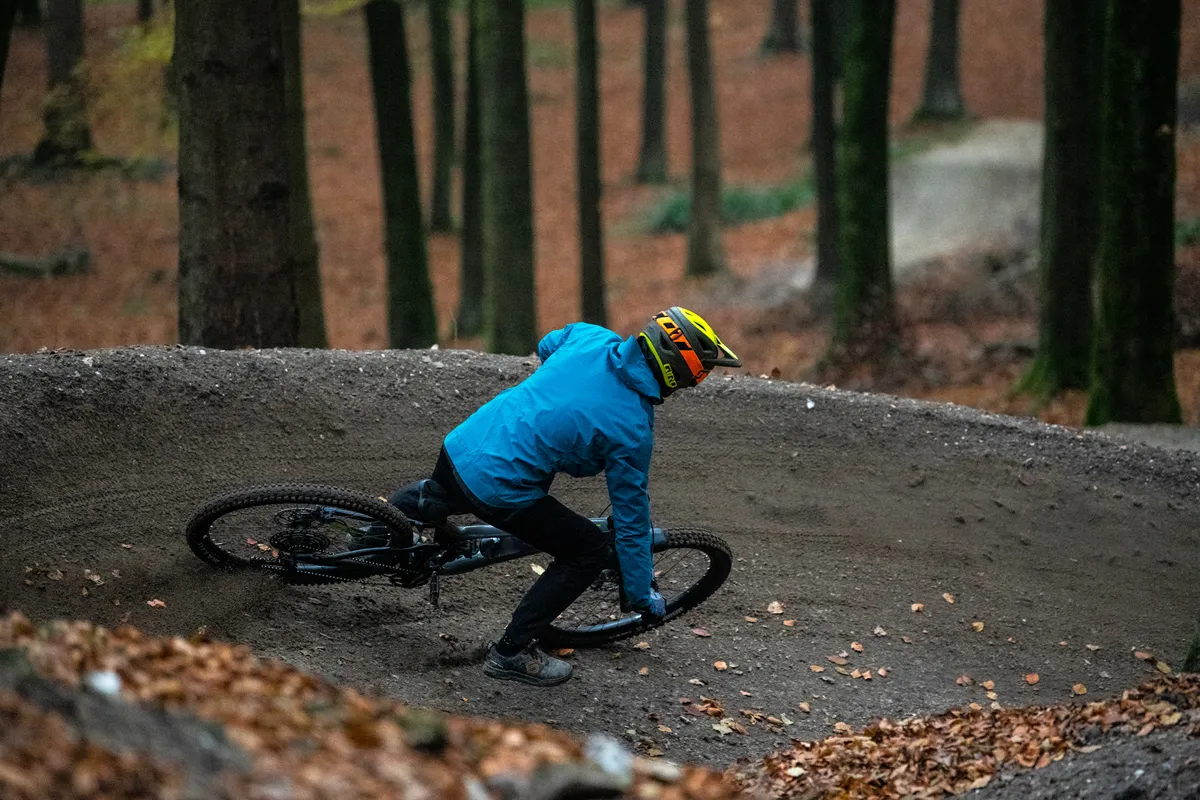
Point the Rift Zone 2 downhill and it truly comes alive, with fantastically-controlled suspension, a great riding position and a well-damped and impressively capable chassis.
The long front-end and short back-end mean that it suits a heels down, elbows out approach.
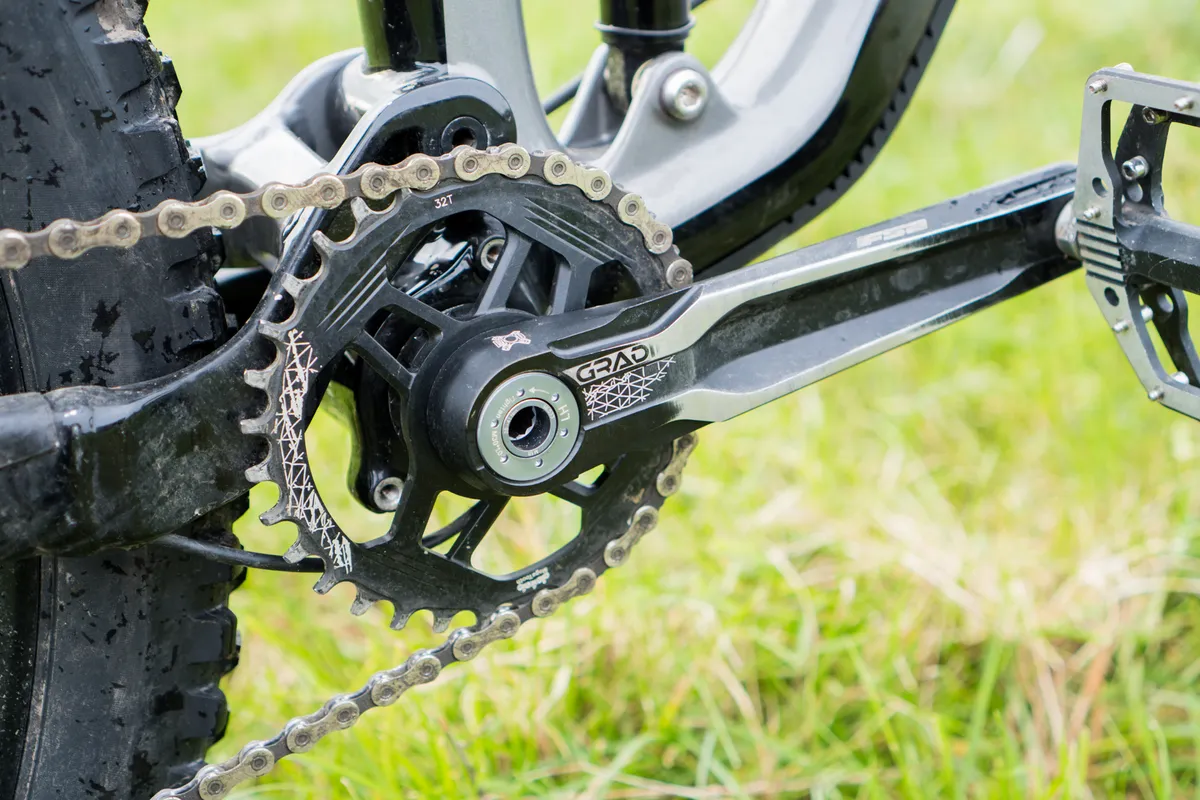
The bike responds well if you're pushing your weight aggressively through the pedals into the back wheel when riding around turns and gave me the sensation of cornering elation.
The short rear-end also makes it quick and easy to change direction as long as confidence and skill levels are up to the job. This has to be one of the best traits of the Rift Zone and very few things in life can beat the feeling of nailing a turn.
Along with the addictively competent cornering, the Rift Zone likes to be worked hard into the terrain. Speed is easily generated from the bike’s chassis by simply forcing it into and pushing it through holes and bumps, especially once I’d got the shock set up for my preferences.
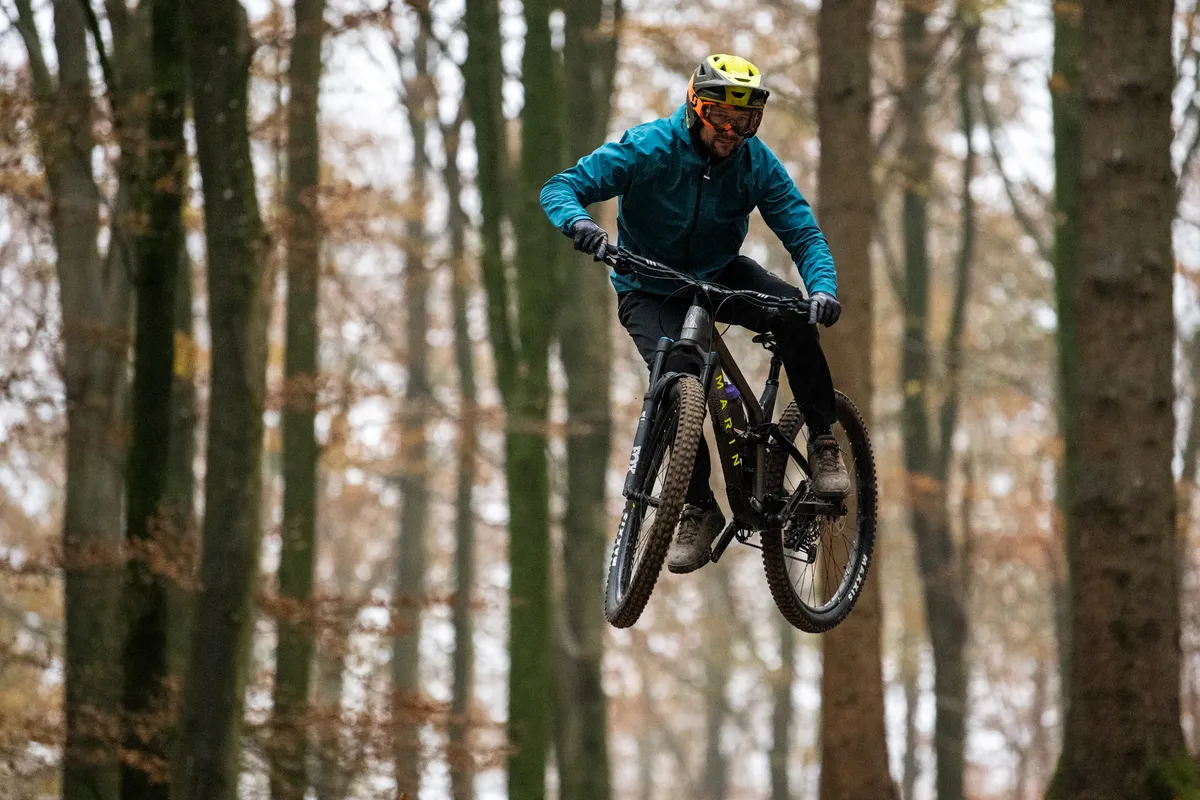
This supportive characteristic is backed up by the chassis’ predictability and, when pushed hard to the limits, it doesn’t squirm, buck or bolt unpredictably. Instead, the feedback from the bike is consistent no matter how hard you ride it.
Luckily, the longer front-end and slack head-angle help to calm the rear’s fondness to turn on a dime, and even at high speed it didn’t feel like it was getting out of its depth. The chassis also helps to quell the potentially riotous feelings of disorder some bikes deliver when ridden in anger.
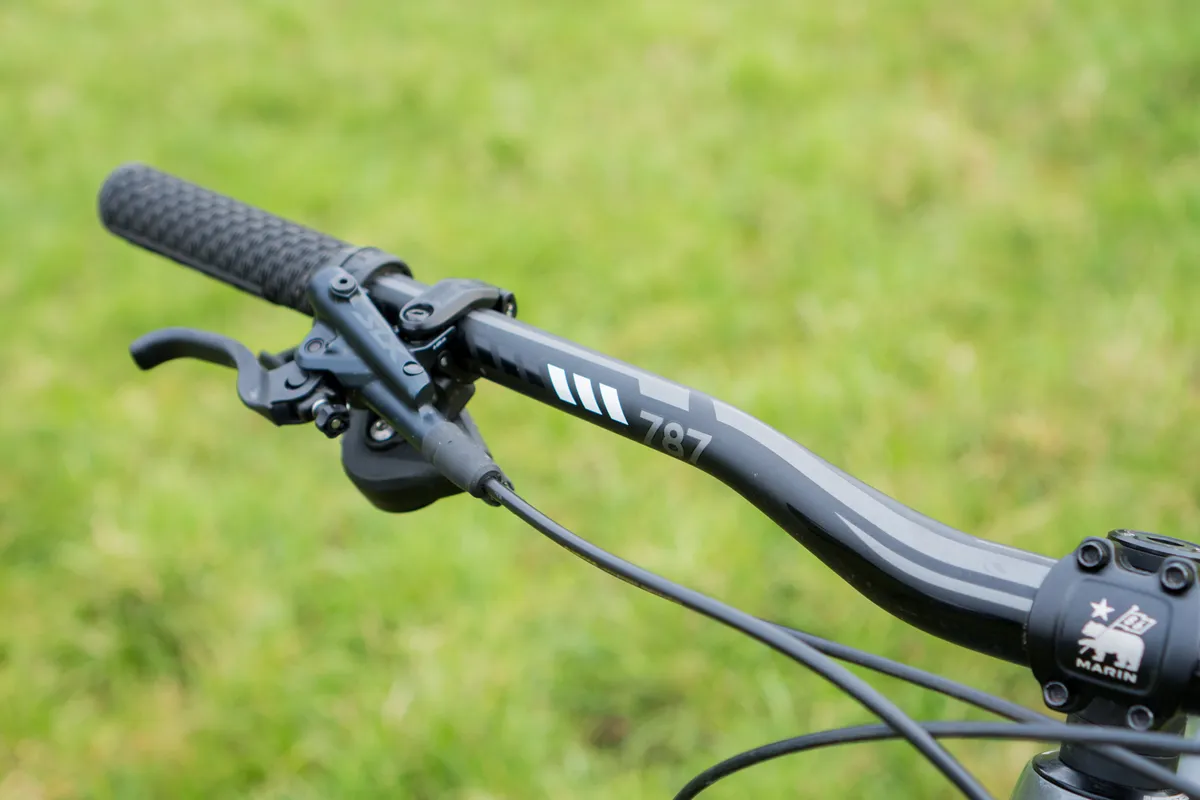
That fantastic numbness relates to outright control – surely generated by the bike’s chassis, 31.8mm clamp bars and well-built wheels – and reminded me of times gone by on the eternal quest to find the perfect setup for downhill racing. A true compliment, then.
This means it tackles off cambers, roots, rocks and rough sections with impressive attitude and forces from the trail aren’t adversely transferred into the rider. Instead, a damped but accurate feeling of the ground’s contours feedback into both feet and hands.
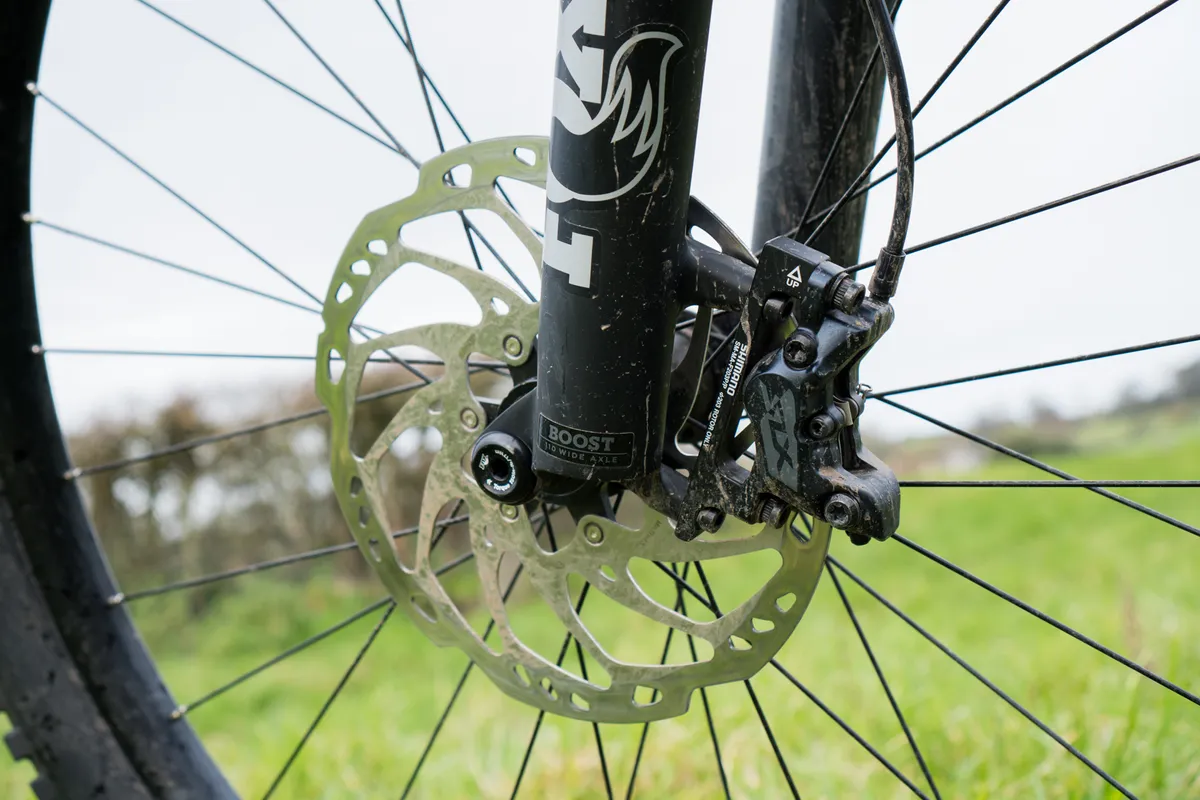
In the bike’s current spec, it offers as close to enduro bike performance as you can get without actually buying an enduro bike, but like any short travel trail bike it does have limits.
There was always going to be a ‘but’ and I alluded to it earlier. The Fox 34 fork is the weakest link in the Rift Zone’s construction.
As a light trail fork it’s more than adequate and the GRIP damper offers satisfactory levels of adjustability and control, but bolt it to the front of what is essentially a short travel enduro bike and there are going to be problems.
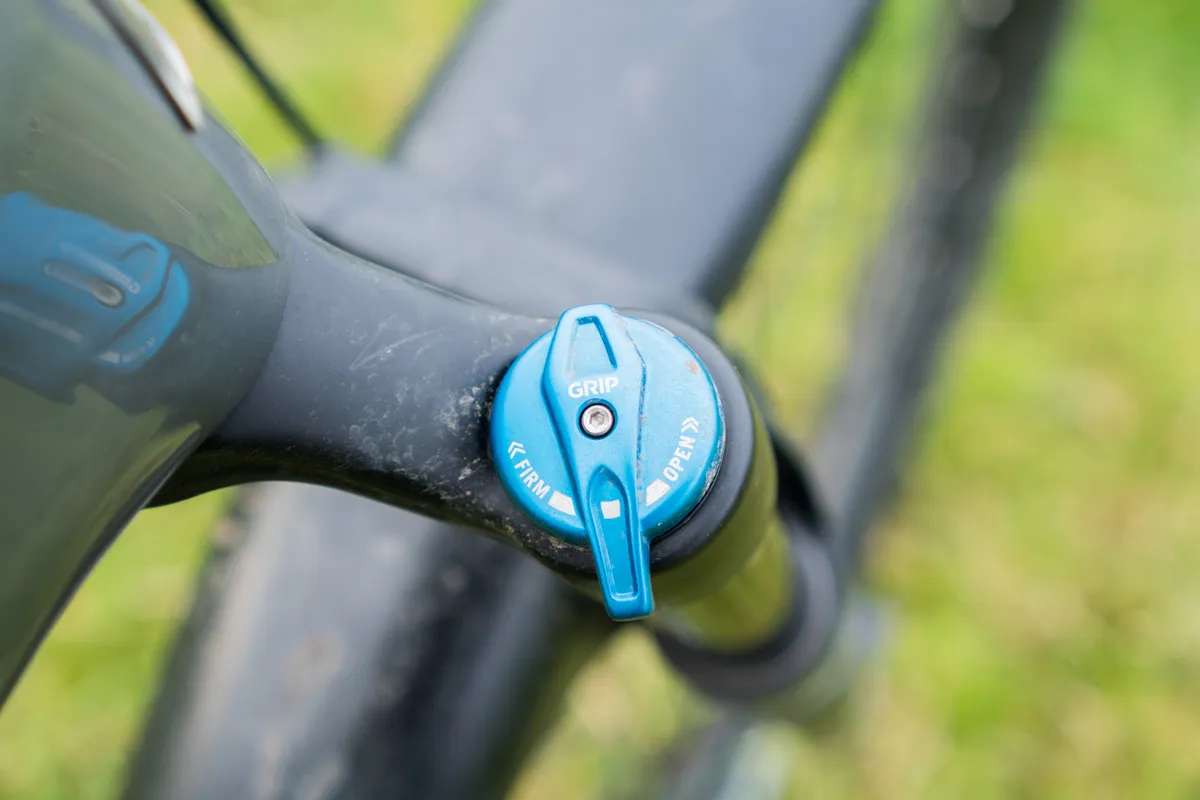
Not only did I prefer it set up with the maximum number of air volume reducer spacers to reduce harsh bottom outs, but the chassis is flexy – likened to a wet noodle by numerous people on plenty of occasions.
Compared to some of its competition — think RockShox’ Revelation and the Reba Recon – the Fox 34 is a good fork, but pitch it against other trail forks such as the RockShox Pike, Yari and 35, which are all trail forks according to RockShox, and it just lacks any kind of oomph.
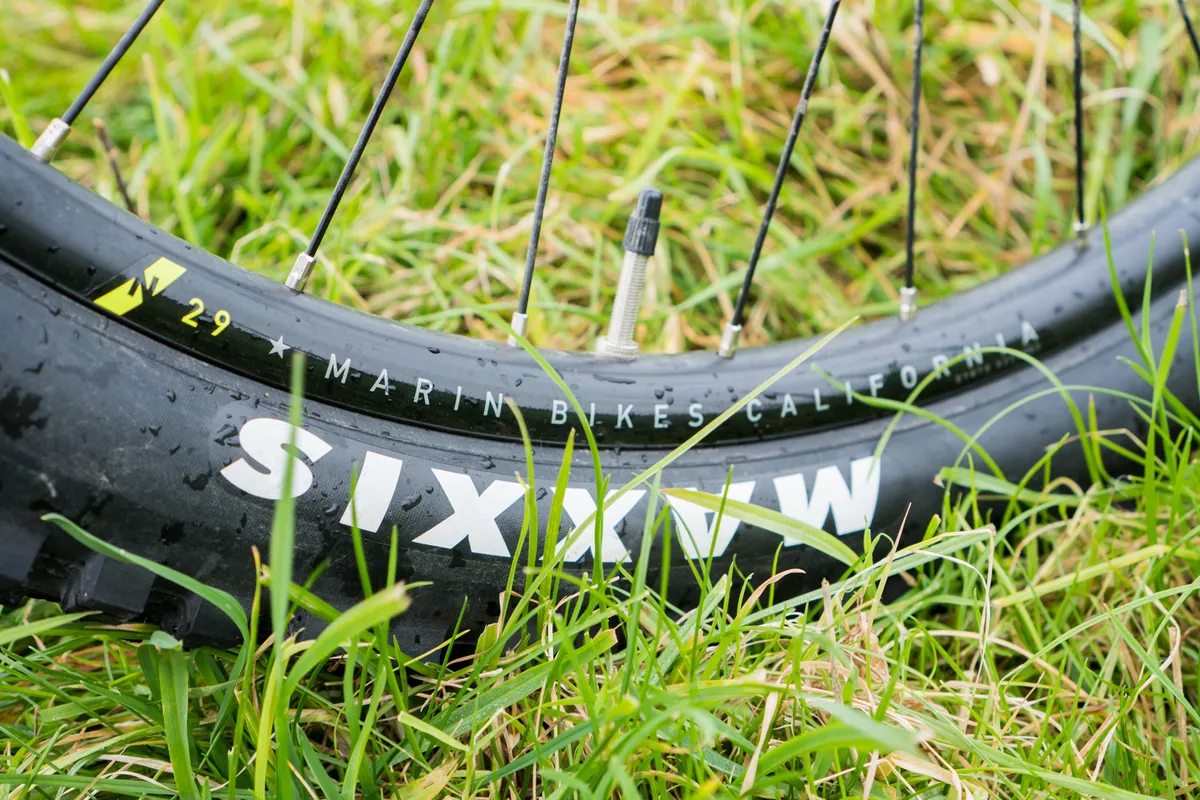
Because it’s already specced with burly tyres, big rims and a well-performing shock, the disadvantages of adding a bit of weight with a burlier fork are barely tangible. I’d be overjoyed to see a Fox 36, Marzocchi Z1 or even a Pike, Lyrik or Yari strapped to the front of the Rift Zone because it would unleash a whole new level of potential without any feasible drawbacks.
Even with the Fox 34 fitted, which was popping at the seams with tokens, it still took some doing to find the bike’s limits and those limits were still a long way down the road of ‘what the hell am I doing on a 125mm travel bike on this terrain?’
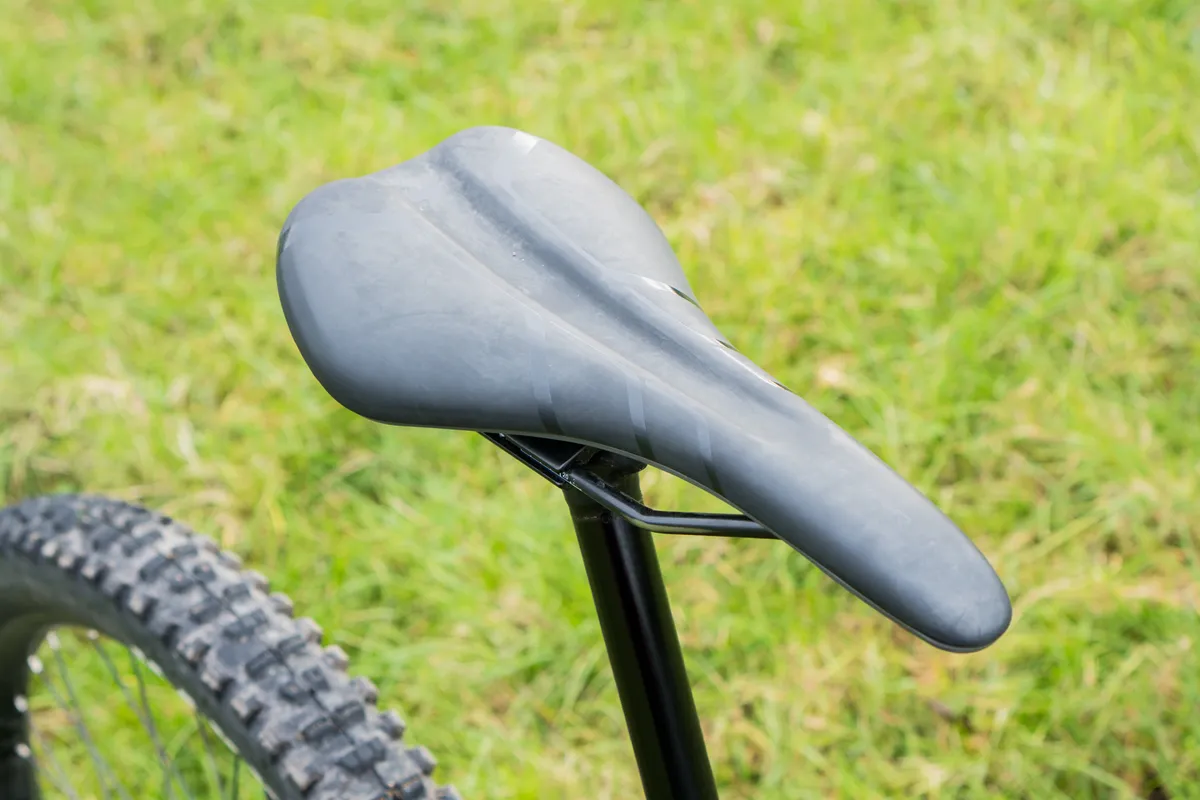
And that’s the kind of question this bike will make you ask again and again. Its downhill performance is truly unique because of how capable it is – even in its current guise if it's set up correctly – but that wonderfully capable chassis needs to be accompanied by a bigger, burlier fork to really unlock more of its potential.
Marin Rift Zone Carbon 2 bottom line
Although the Rift Zone 2 is mildly compromised on the climbs, thanks in part to the hefty Maxxis rubber and fairly high headline weight figure, some key parts of its spec, namely the tyres and wheels, could be changed to vastly improve climbing performance and drop weight.
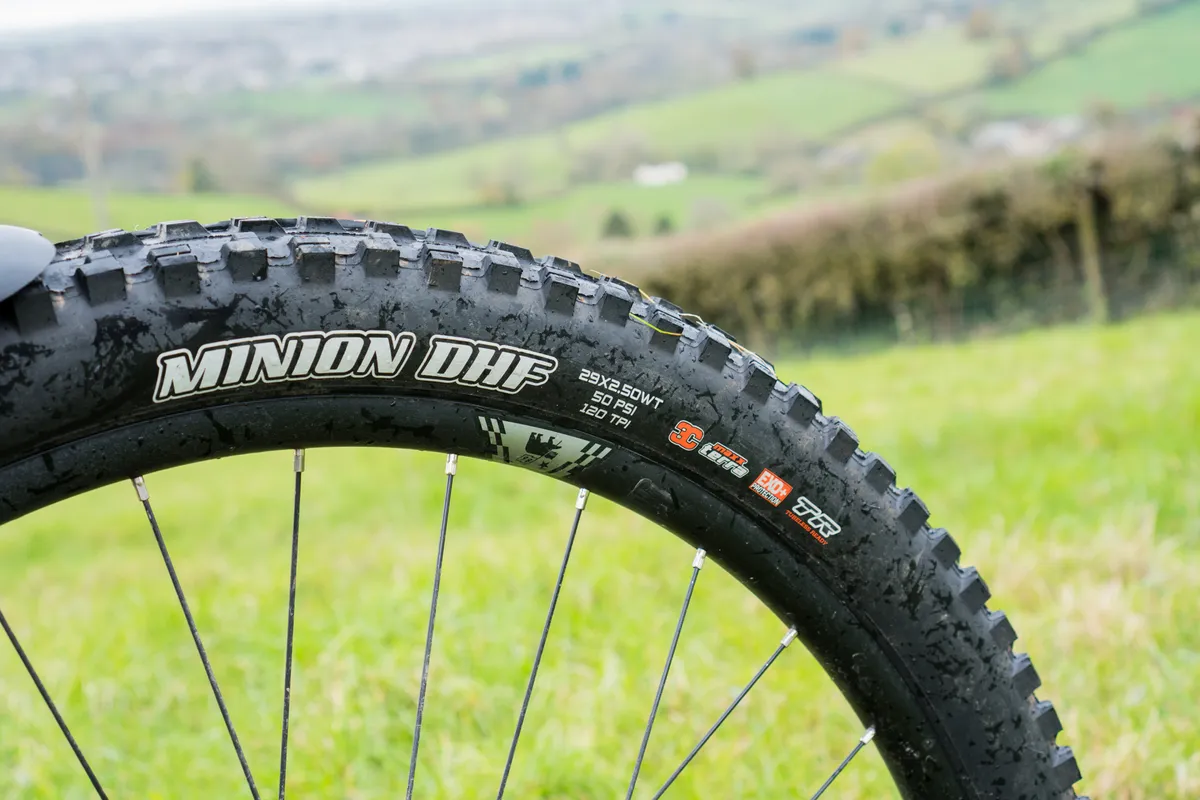
I think this would be missing the point of the bike though, because it would alter its descending performance. On the downs, the Rift Zone has truly magical ride qualities that bring a smooth and controlled presence to what could be a rowdy experience. This makes it easy to ride fast, which is unfortunate for the Fox 34 fork because its flaws are easily highlighted.
Therein lies the riddle of the 125mm travel bike with a bite much bigger than its bark. It’ll happily keep up with enduro bikes pretty much everywhere, and with an even bigger fork on the front, it could quite happily convince you it is an enduro bike, but it does have limits and the more enduro it becomes, the less trail it is.
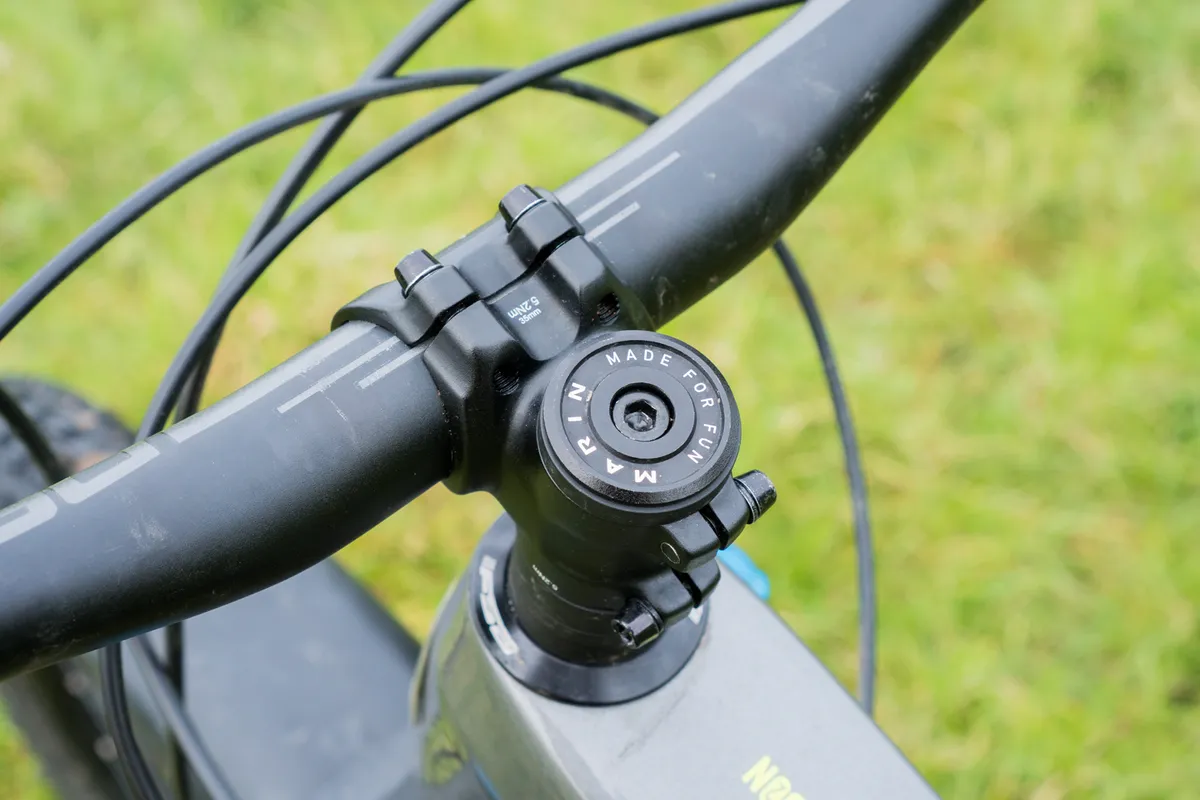
So, if you’re a trail centre hero, an occasional bike park dweller, someone who rides all-day gnarly enduro epics or just a natural singletrack shredder, I reckon the Rift Zone has to be a top contender for your cash.
Yes, it has some flaws, but as an overall package it spans disciplines, performing better than some specific bikes for a price that isn’t outrageous. If only there was the option to spec a bigger fork on the front from the factory…
Product
| Brand | Marin |
| Price | A$5999.00, €4399.00, £3995.00, $4399.00 |
| Weight | 14.33kg |
Features
| Fork | Fox Performance 34 Float with GRIP damper |
| Stem | Marin 35mm |
| Chain | KMC X-12 |
| Tyres | Maxxis Minion DHF 2.5X29” WT 3C MaxxTerra EXO (f), Maxxis Minion DHRII 2.4X29” WT 3C MaxxTerra EXO plus (r) |
| Brakes | Shimano SLX 200/180mm rotors |
| Cranks | FSA Gradient with 32-tooth chainring |
| Saddle | Marin Trail Speed Concept Pro |
| Wheels | Marin Aluminium Double Wall rims on Shimano hubs, |
| Headset | FSA |
| Shifter | Shimano SLX 12-speed |
| Cassette | Shimano SLX M7100 10-51-tooth 12-speed |
| Seatpost | X-Fusion Manic with PNW Loam Lever |
| Grips/tape | Marin single clamp locking |
| Handlebar | Deity Skyline, 787mm wide, 25mm rise |
| Rear shock | Fox Float DPX2 Performance EVO air spring |
| Bottom bracket | 73mm BSA threaded |
| Available sizes | Small, medium, large, extra large |
| Rear derailleur | Shimano XT 12-speed |
